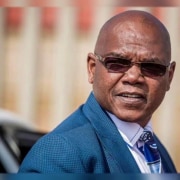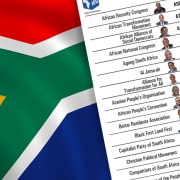|
Getting your Trinity Audio player ready...
|
An investigation is only as successful as each of the components that contribute to it. When Corruption Watch undertakes an investigation, we of necessity depend on the people with whom we interact to co-operate and furnish us with the information we need, so that we can come to a solid conclusion. Often this is not the case and we battle to get crucial information which will help us resolve a case to the satisfaction of the reporter.
One such example is that of Joe Morolong Local Municipality in the Northern Cape. We received an anonymous report alleging that the municipality misrepresented information in its 2011/2012 annual financial statements. We were told that the municipality recorded, in those annual financial statements, that it funded a small local company, called Itsoso Granite Cooperative, to the tune of R1-million through a social labour plan (SLP).
Corruption Watch has seen the statement in which it is noted on page 13 that “Itsoso is funded a sum of R1-million through the SLP”.
However, our reporter claimed that Itsoso never received a cent of this money, and we were asked to investigate.
Asking questions
On 10 March 2017, Corruption Watch addressed correspondence to the municipal manager Tshepo Bloom, enquiring into these allegations. In our brief correspondence we outlined the allegation and requested the municipality to furnish any evidence to the contrary, proving that the money was paid to Itsoso and it was received.
Paragraph 8 of our correspondence reads: “… In light of the above, please confirm whether or not Itsoso was funded by the municipality: provide proof of payment in respect”.
Paragraph 9 went further to request proof in any format corroborating the fact that indeed the municipality paid the money to the beneficiary as recorded in the 2011/2012 annual financial report. It reads:
“In addition we request the municipality to furnish proof that indeed Itsoso did receive the funding in the 2011/2012 financial year as posited in the annual performance report for the said time period. This refers to, but not limited to all paperwork which proves that indeed Itsoso was the beneficiary of these funds and that the municipality did pay and any other records in any format which corroborate the fact of such funding, including the ‘SLP’.”
Silence and more silence
We received an acknowledgement from the municipal manager on 15 March. In the same communication the manager requested a Eugene Khokhong, a manager in Transversal Issues and Legal Services to attend to our enquiry. Khokhong also briefly acknowledged receipt of the request and informed us that a response would follow in due course.
We followed up with Khokhong via e-mail on 21 April 2017, and asked for an estimated date by which he would respond. Khokhong did not reply to the message and has been quiet ever since.
It is difficult to come to any conclusion and resolution in light of the lack of co-operation from the municipality. However, it might reasonably be inferred that, because the people we engaged with are not supplying the records we requested, there are no such records. In other words, either the money was never paid to Itsoso as recorded in the 2011/2012 annual financial report, or because the municipality has a poor system of keeping records, as alleged by our reporter, the transaction was never recorded. We are of the opinion that it should not be difficult or take such a long time for an entity such as a municipality to provide such information if they had an efficient record-keeping system in place or if such information exists.
We are often frustrated in our attempts to uncover the story behind the reports we received. Refusal to co-operate, silence on the other side, denial of Paia requests – these are all part and parcel of our investigative work and it is the reason that, in many cases, we cannot resolve a complaint to the satisfaction of a reporter.
What do we do with our reports?
Even we don’t have success, as with this case, we may publish the story on our media and social media platforms to illustrate a certain point – in this case, that we often struggle to get the information we need. Sometimes this spurs the people involved to attend to the matter.
We might also refer the incident to a journalist to expose the incident on our website or in the media. Or we might refer the incident to a government authority for investigation (such as the Independent Police Investigative Directorate or Public Protector).
We use reports in other ways. We might add the report to a number of similar reports on a topic which we are campaigning for. For example, reports of immigration irregularities are grouped under our refugee campaign, Project Lokisa.
We might draw up comprehensive advocacy documents, containing details of problem areas, their impact, and our recommendations, to present to government departments or authorities for their further action.
Or we could take some kind of legal or political action in respect of the incident reported – for example, writing letters to the relevant authority or making a Promotion of Access to Information Act application.







